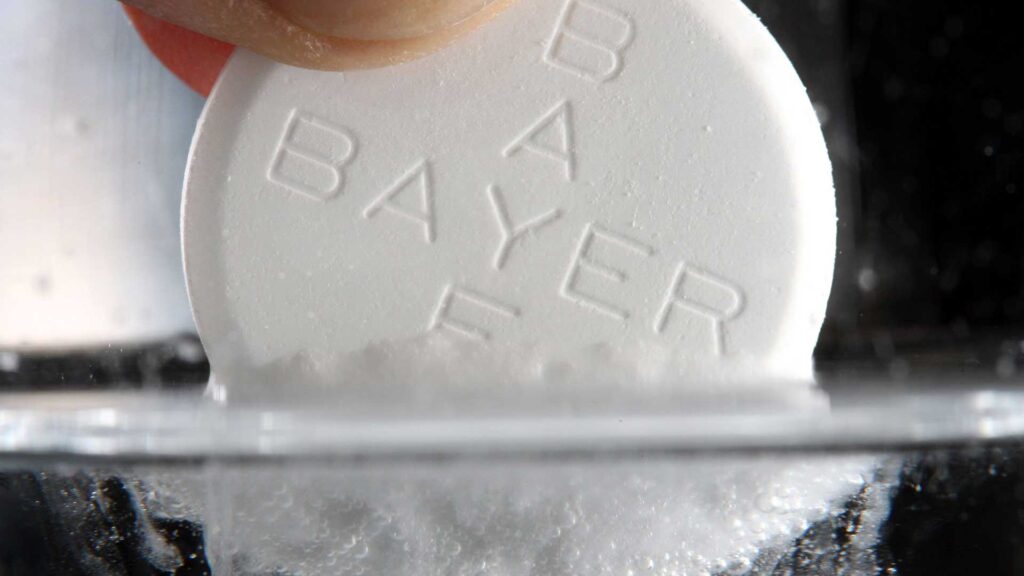Aspirin is one of the most well-known over-the-counter drugs, but there are a lot of misconceptions about it. For example: While it’s true that willow bark played a role in the history of aspirin, the tablets in your cabinet do not come from tree bark—modern aspirin is made with benzene derived from petroleum.
Aspirin was never really made directly from willow bark, either. The first known person to produce acetylsalicylic acid—aka aspirin—made it with salicin, which naturally occurs in plants like willow, meadowsweet and myrtle. However, in the late 19th century, scientists began making acetylsalicylic acid by converting benzene into phenol, and phenol into salicylic acid. This is the only kind of aspirin that has ever been sold commercially.
Aspirin debuted at the turn of the 20th century as a revolutionary drug that eased pain, reduced fever and marked a significant achievement in modern chemistry. Yet the question of who should get credit for its invention became politicized after the Nazis took power in Germany, leading to the attempted erasure of a Jewish chemist’s contributions.
Willow in Ancient History and Early Experiments
Plants containing salicin have a long history in medicine. Sumerian tablets from 4,000 years ago associate willow with pain relief, as does the Egyptian Ebers Papyrus from around 1500 B.C. Ancient Chinese and Greek sources also recommend willow treatments for certain medical conditions. This includes writing attributed to Hippocrates, the famous 5th-century Greek physician.
Some modern scholars have questioned how effective these ancient treatments were, since ingesting enough willow to get a useful dose of salicin can cause severe stomach pain. In fact, when one 18th-century English reverend began experimenting with willow as a pain reliever, his motivation was not ancient historical precedent, but rather a now-debunked theory called the “doctrine of signatures.”
The doctrine of signatures proposed that nature holds hints about how to cure medical maladies. Reverend Edward Stone believed that the cures for certain ailments could be found in the same geographic locations that caused them. At the time, English thinkers like Stone believed that fevers came from swamps. Therefore, he decided to investigate swamps in order to find a cure for fever.
Stone ended up grinding willow bark found near swamps into a powder and administering it to people suffering from fevers. In 1763, he presented a report to the Royal Society in England about his study, which he claimed had showed that the powder worked.
The next major milestone in the history of aspirin came in 1853, when the French chemist Charles Frédéric Gerhardt used salicin from willow bark to produce acetylsalicylic acid, or aspirin, for the first time.
“Gerhardt was the first one to actually produce acetylsalicylic acid, but his process was not very good,” says Joe Schwarcz, a chemistry professor and the director of McGill University’s Office for Science and Society. “It was not reproducible, so it never became of any commercial importance.”
It wasn’t until the 1890s that scientists at the Bayer company in Germany produced a commercially viable form of acetylsalicylic acid. Bayer patented the drug and began selling it under the brand name “Aspirin,” though the company later lost the trademark to that name. The question of which chemist at Bayer was responsible for its creation then became caught up in the antisemitic politics of Nazi Germany.
Aspirin was first introduced in 1899 as a relief against pain.
Controversy Over Bayer Aspirin
The first written account of Bayer’s development of aspirin is a footnote in a 1934 history of chemical engineering. This footnote credits Bayer chemist Felix Hoffmann with developing aspirin, and claims he was inspired by his father’s struggle with chronic pain to create a drug that eased pain yet was easier on the stomach than existing remedies.
Hoffmann’s synthesis relied on a process that German chemist Hermann Kolbe had developed to convert benzene into phenol, and phenol into salicylic acid. In 1897, Hoffmann used salicylic acid created through this process to produce acetylsalicylic acid, or aspirin. Yet Schwarcz says that’s not the whole story.
“It was actually [Arthur] Eichengrün”—Hoffmann’s boss—“who told Hoffmann to try to convert salicylic acid into a substance that was more acceptable in terms of intestinal upset,” he says. Eichengrün was Jewish, and this may explain why the 1934 footnote, published a year after Adolf Hitler and the Nazi Party seized power in Germany, doesn’t mention him.
Eichengrün later wrote a letter to Bayer from a concentration camp “where he described exactly the progress of events and how he had told Hoffmann to synthesize aspirin,” Schwarcz says. In 1949, Eichengrün published a paper in Pharmazie repeating his claims that he had instructed Hoffmann to synthesize aspirin and that Hoffmann had not independently come up with the idea.
Modern scholarship has since affirmed Eichengrün’s role in the creation of aspirin.
Discovery that Aspirin Is a Blood-Thinner, and Modern Guidance
Since aspirin’s invention, scientists have continued to learn new things about its effects on the human body. In the 1950s, California doctor Lawrence Craven published papers arguing that aspirin is an anticoagulant that can prevent blood clots. Further studies confirmed that aspirin is a blood-thinner and an anti-inflammatory drug. In 1982, British pharmacologist John R. Vane won a Nobel Prize for his research into how aspirin works.
Scientists have also discovered some negative effects of aspirin. Taking too much of it can lead to gastrointestinal problems like ulcers. In recent years, medical experts have switched from recommending that older adults regularly take low-dose aspirin to avoid blood clots, to recommending that only older adults with certain risk factors for cardiovascular disease regularly take low-dose aspirin. Basically, the current guidance varies from person to person.
As aspirin is something that scientists continue to study, there will likely be new things we learn about it in the future.



